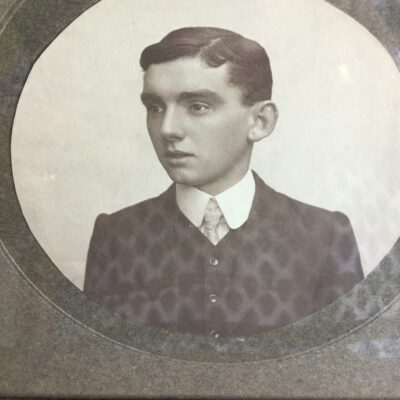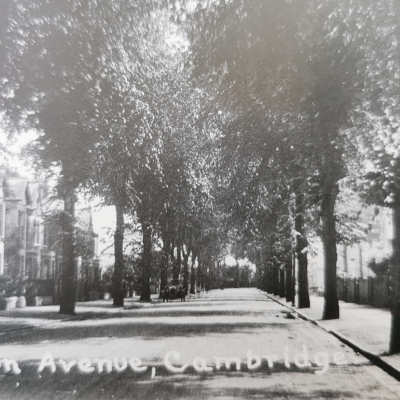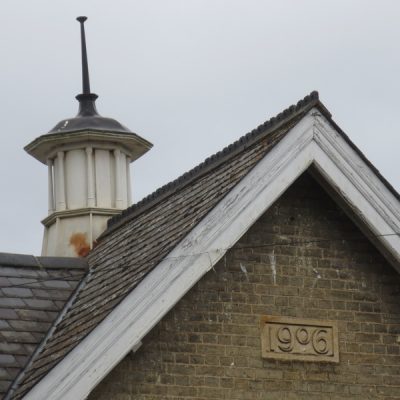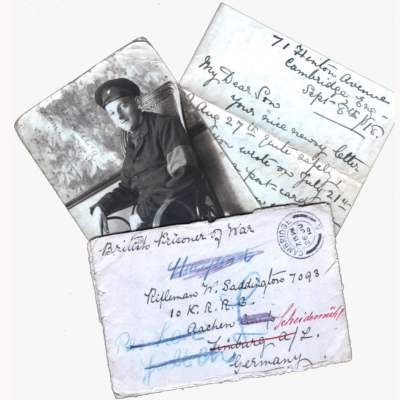Search by topic
- archaeology
- architecture
- bricklayer
- Building of Local Interest
- carpenter
- church
- crime
- dressmaker
- fire
- Great Eastern Railway
- listed building
- medieval
- oral history
- Public House
- Rattee & Kett
- Religious House
- Roman
- scholar
- school
- Then and Now
- tudor
- women
- work
- world war one
- world war two
Search by text
The Great War in St John’s Parish: Hinton Avenue
World War One - Hinton Avenue
No. 15 Oxford Villa (Edward J Papworth railway clerk):
Oswald Jack Papworth, an employee of Matthew and Son Ltd, a large store in at 19-21 Trinity Street, served first with the Suffolk Yeomanry then became a lance corporal with the 9th coy Machine Gun Corps. Born 1898 in Panton Street, he was the son of Edward, a railway clerk. He was killed on 13th April 1917. (Of approximately 90 employees of Matthew and Son who served in the forces, 5 were killed.)
Horace Bernard Smith was a lieutenant with the 32nd Bttn Australian Imperial Force. He was a laborer from Katanning, Western Australia and had enlisted in July 1915 age 22. He had joined his unit in France as private in March 1917 after a bout of dysentery in Egypt kept him in hospital there. He was sent to Cambridge for officer training in December 1917. He qualified for his commission in June 1918. He ended up back in Cambridge in the 1st Eastern general hospital in December 1918 with diarrhea. He was awarded the Military Cross in January 1919 for the following action:
During the operations near Fontaine-les Cappy, on 27th-29th August, 1918, when the flank of the company was held up by a well-concealed machine gun and about thirty men, he advanced with two men and a non-commissioned officer, and captured the gun and eight prisoners, putting the remainder to flight with heavy loss. His gallantry and good leadership were conspicuous, and his complete disregard for his own safety was a splendid example to his men.
On 8th May 1919 he married Florence Bass, daughter of Charles Bass, gardener, at St John’s, minister Rev. I B Gibbs.
Thomas Dickson Darcus became a corporal with the Canadian Military Police. He was born in 1888 in Dublin and was a student when he enlisted in May 1915 in the Canadian Overseas Expeditionary Force. On the 19th June 1919 he married Ellen Bass at St John’s.
Harold James Bass was an apprentice in Jesus College kitchens. He served as a corporal in the East Lancashire Regiment in France from 1917 and was reported wounded in a hospital France 5/4/18.
No. 19 Barrule:
Sidney Watts Day, born 1886, was a corn merchant. In 1911 he was living with his parents at 26 Emery Street, Cambridge. He served in the Royal Field Artillery.
No. 69 (formerly 6):
Victor Douglas Pettit, b. 1889, was a post office engineer. He was called for a medical on 9th July 1917 but not assigned to a unit.
Harold Petit, b. 1892, was a domestic chauffeur. He volunteered for the Red Cross as a motor ambulance driver from 1916-18.
No. 77 (formerly 2):
William J C Saddington, born 1889, was a private with the 10th Btn Kings Royal Rifles.
No. 16 Hinton Cottage: Mrs Morris volunteered for the Red Cross and from 1916-1919 worked at the First Eastern General Hospital. This was probably Lizzie Morris, wife of William, labourer, who in 1911 was living at 4 Hinton Avenue.
No. 10 Devonshire Villa:
William Walter Dolbear White served in the Army Service Corps (MT). He enlisted in 1916 and was mobilized Feb 1917. However he was diagnosed with over-strain of the heart while apprenticed to an engineering firm, shortness of breath and occasional attacks of fainting. He was discharged 1918 with a weak heart.
unknown address:
George Harding enlisted in the 2nd army on 28th May 1915.
Contribute
Do you have any information about the people or places in this article? If so, then please let us know using the Contact page or by emailing capturingcambridge@
License
 This work is licensed under a Creative Commons Attribution-NonCommercial-ShareAlike 4.0 International License.
This work is licensed under a Creative Commons Attribution-NonCommercial-ShareAlike 4.0 International License.












